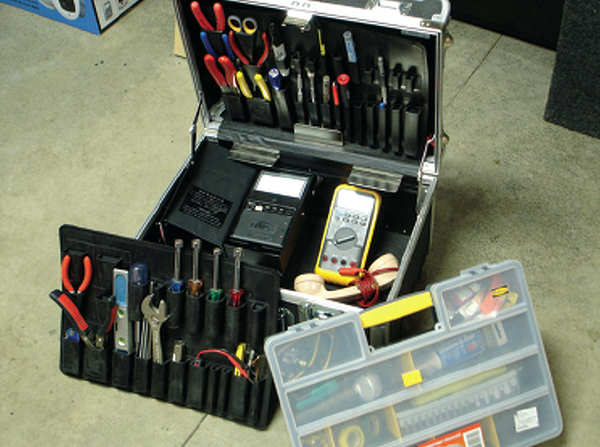The sound system in the chapel at a local retirement home had all of the typical problems – distortion, poor gain-before-feedback, and intermittent operation.
This is a very basic system, so what could go wrong?
Two wireless lapel microphones drive a small mixer/amplifier, which in turn drives three ceiling loudspeakers via high impedance distribution.
There is also a hearing assistance system, which according to the staff has never worked properly.
During a typical chapel service the vocalist holds the wireless lapel mic to sing as though it were a hand-held mic – not ideal but it should still work.
The minister uses the other wireless lapel mic in the usual fashion.
Both mics distort badly at a fairly low level. They would be much better off with a simple gooseneck mic, which would accommodate both talkers and singers since both always stand at the lectern.
On the other hand there are no installed mic jacks in the room, and the owners do not want visible cables. I elected to keep it simple and just re-implement the existing mics.
I have two equipment cases. The first is typical toolbox full of hand tools and a few basic meters including a Music Supply TS-1 hand set, a Fluke volt-ohmmeter, Neutrik Minirator and a TOA ZM-104 impedance meter. I refer to this as my “nothing to boot or recharge” case. We’ll call it Case A.
The second contains the more sophisticated instruments, including a scope meter, USB audio interface, measurement mic and an Audio Toolbox.
You guessed it – Case B. I always start with Case A, and then call in Case B if needed, since it requires a second trip to the truck and a battery check before leaving the shop. Fortunately, this whole project could be handled with Case A.
Divide and Conquer
Since just about any stage of this system (or several) could be the culprit, I elected to start at the input and work through to the output, correcting and optimizing things as I went.

First in the chain are the wireless mics.
Because the mics sound distorted, the first step is to find out if they are working properly. These are entry level units that use a 1/4-inch jack for signal output.
The first question was “Is this output balanced or unbalanced?”
The slow insertion of a Tip-Ring-Sleeve plug into the output jack revealed that it has three electrical contacts, so it is potentially a balanced output. A quick listen with the TS-1 handset across a TRS plug revealed that there was only signal on the tip.
This test also revealed that the signal level was close to line level, since a mic level signal would not be audible on the passive handset.
Since it could still be balanced with the ring grounded through a resistor, I used the TOA ZM-104 to check the impedance from T and R to S. The ring-to-sleeve connection is a dead short, so this is an unbalanced output and should be treated as though it is a simple TS output jack.
The mics sounded O.K. through the TS-1, so for now I ruled them out as the source of the distortion and proceeded to interface them with the mixer/amplifier.
Electronics Upgrade
The amplifier in the rack was inadequate for the application.




















